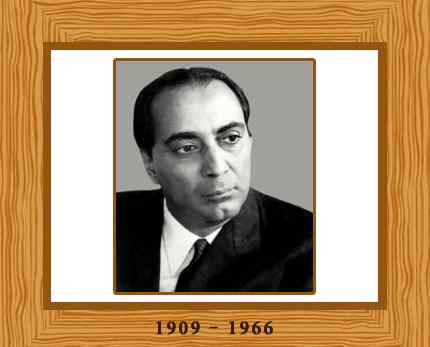The President, in the notification, said he had received a report from the governor of Jammu and Kashmir that the administration of the UT of Jammu and Kashmir could not be carried on in accordance with the provisions of the Constitution and the Jammu and Kashmir Reorganisation Act.
'In order to prevent any constitutional and administrative vacuum, it is necessary to invoke Section 73 of the Jammu and Kashmir Reorganisation Act, 2019 for the proper administration of the UT of Jammu and Kashmir,' he said.
The President said after considering the governor's report and other information, he was satisfied that a situation had arisen in which the administration of the UT of Jammu and Kashmir could not be carried on in accordance with the provisions of the Jammu and Kashmir Reorganisation Act.
'Now, therefore, in exercise of the powers conferred under section 73 of the Jammu and Kashmir Reorganisation Act, 2019, read with Articles 239 and 239A of the Constitution, and of all other powers enabling me in that behalf, I hereby proclaim that I -- (a) assume to myself as President of India all functions of the Government of UT of Jammu and Kashmir and all powers vested in or exercisable by the LG of the UT of Jammu and Kashmir; (b) declare that the powers of the legislature or legislative Assembly of the Union territory of Jammu and Kashmir shall be exercisable by or under the authority of Parliament,' the notification issued by the president said.
Kovind also used the incidental and consequential provisions, which were necessary or desirable for giving effect to the objects of this proclamation.
'In exercise of the functions and powers assumed to myself by virtue of clause (a) of this Proclamation, it shall be lawful for me as President of India to act to such extent as I think fit through the LG for administering the UT of Jammu and Kashmir in accordance with the provisions of the Constitution and the J-K Reorganisation Act, 2019,' the notification said.
The central rule was first imposed in Jammu and Kashmir in June 2018, after the resignation of the then chief minister Mehbooba Mufti when the Bharatiya Janata Party withdrew support to the state government led by the People's Democratic Party (PDP).
The first central rule as 'Governor's rule' continued for six months.
After the six-month period, President's rule was imposed for the next six months, which was subsequently extended with the approval of Parliament.
Article 356 of the Constitution, under which President's rule is imposed in a state, is not applicable to Union Territories.
Mathur sworn-in as first L-G of Ladakh
Former defence secretary R K Mathur was on Thursday sworn-in as the first Lt Governor of strategically located Union Territory of Ladakh.
Mathur, who will be turning 66 later this month, was administered the oath of office by Chief Justice of Jammu and Kashmir High Court Gita Mittal at a function held at Sindhu Sanskriti auditorium at Tisuru.
The warrant of appointment was read by a senior official at the function after which the oath ceremony took place.
Mathur, an IAS officer of 1977 batch from Tripura, later inspected a guard of honour of local police.
A post graduate in Industrial Engineering from IIT, Mathur retired as Defence Secretary in 2015 and was appointed as Chief Information Commissioner in December the same year. He completed his tenure in November last year after attaining the age of 65 years.
The Centre on Wednesday night appointed Umang Narula, an IAS officer of 1989 batch, as advisor to Mathur besides posting S S Khandare, an IPS officer of 1995 batch, as 'Head of Police' in Ladakh.
G C Murmu will be sworn-in as the first L-G of Jammu and Kashmir on Thursday.
MHA replaces state of J-K with 'UT of Jammu and Kashmir' in notification
Meanwhile, the Union Home Ministry in a notification on Wednesday replaced the state of J-K with the 'Union Territory of Jammu and Kashmir' and announced omission of 'permanent residents or hereditary state subjects'.
In the late night notification, the ministry's Jammu and Kashmir division announced a slew of measures, including application of central laws to the state.
'... there are references in the state laws that have been applied to the Union Territory of Jammu and Kashmir, and the Union Territory of Ladakh to the expressions 'permanent residents' or 'hereditary state subjects'..., wherever they occur, shall be omitted,' it said.
The references, by whatever form of words, to the 'state of Jammu and Kashmir' or 'Jammu and Kashmir' or 'state' shall from October 31 be construed as 'Union Territory of Jammu and Kashmir' or 'Union Territory of Ladakh', as the case may be, it said.
It said any reference in any existing law to the 'legislature of the state or any House or Houses' shall be construed as references to the legislative assembly or legislature of the Union Territory of Jammu and Kashmir.
No lawsuit will be maintained for any action taken, including any notification issued or order, rule or appointment made during the period between August 5 and October 31 as these shall be deemed to be valid and operative as if such things had been done or actions taken in accordance with law, according to the notification.
It said any person who has taken an oath or made an affirmation before holding office or position as such under the Jammu and Kashmir Constitution or other laws in force in the existing state of J-K immediately before the appointed day shall be deemed to have taken oath or affirmation under the Indian Constitution or law applicable to the two union territories, and shall continue to hold office or position as such till October 31.
Rediff.com used here for education purposes only.







